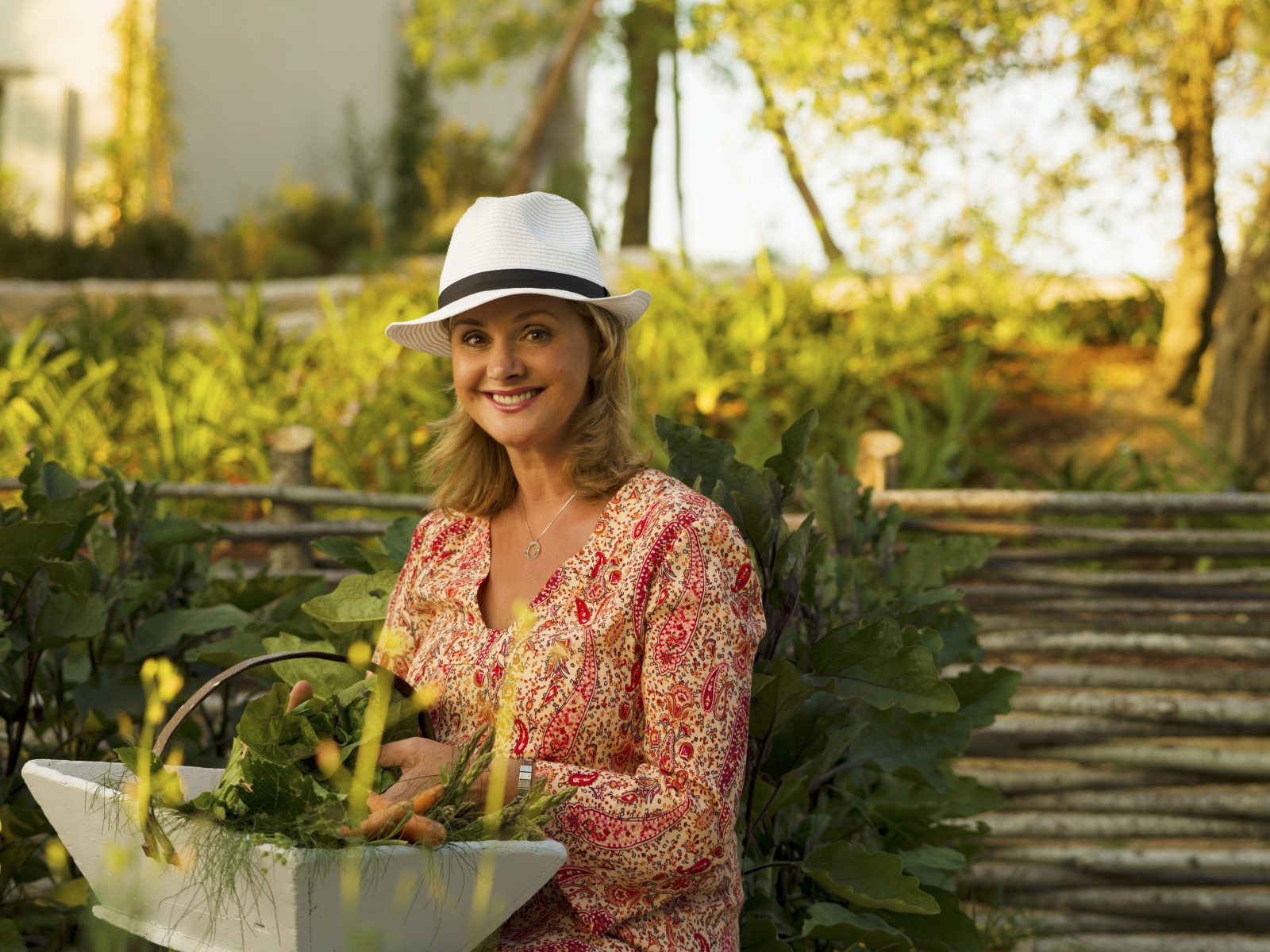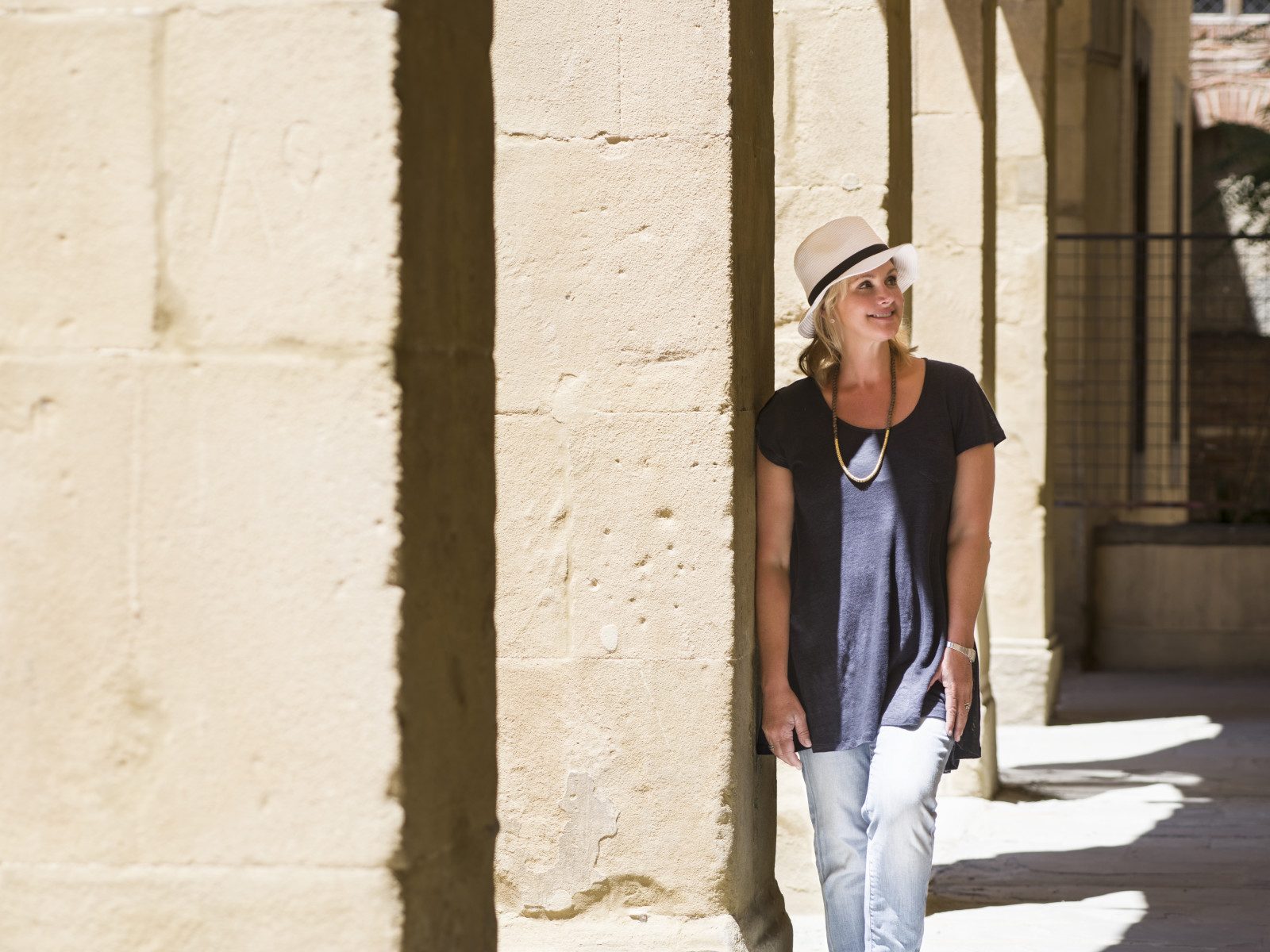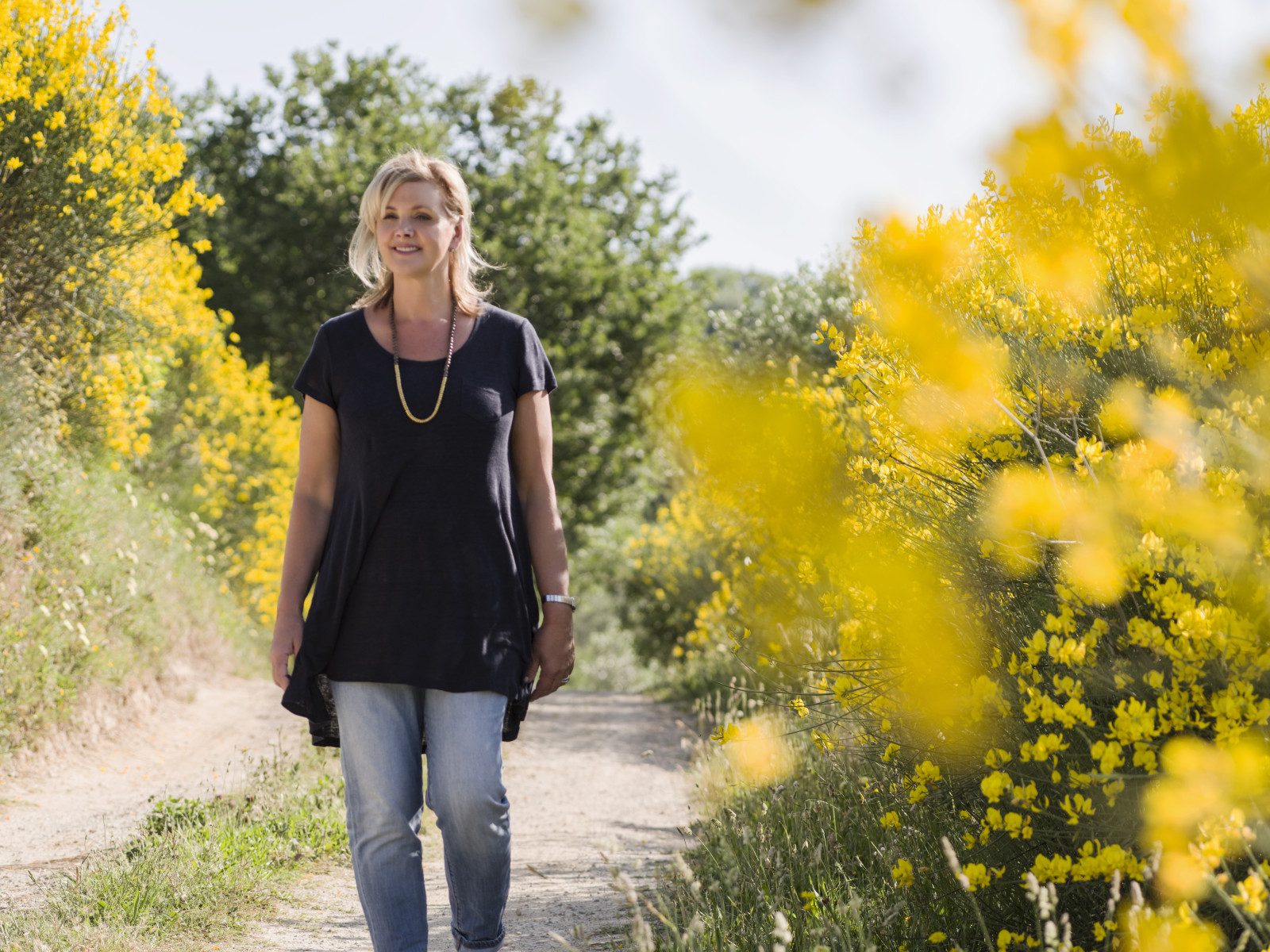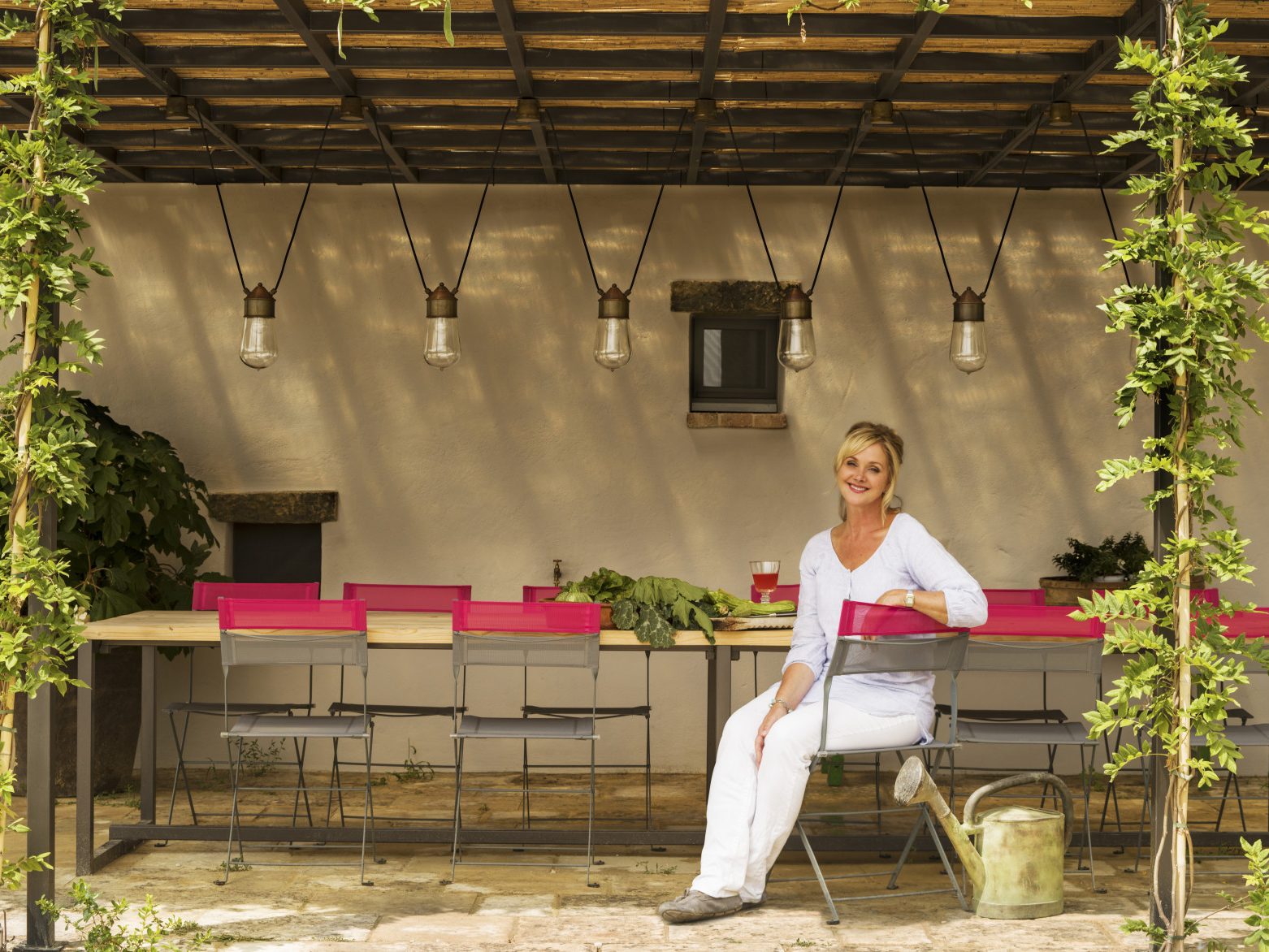
Debbie Travis Takes on Tuscany
Debbie Travis is not one to shy away from a fixer-upper, but her latest project was in a different league to the dreary digs she used to tackle in shows like Facelift, From the Ground Up, and even The Painted House. In fact, it’s hard to imagine a greater challenge for the makeover maven than a 13th-century ruin on an international heritage site governed by rigid historical protection laws. “I was so out of my depth,” says Travis, who documented the entire process for a new series on OWN: Oprah Winfrey Network (Canada), La Dolce Debbie. Just how did the renovation compare to her earlier television work? “Well, those were really decorating shows, where the most we’d do is knock down some drywall for a little bit of drama,” she says. “There was no drywall in Tuscany-just real stone walls!”
The drama in La Dolce Debbie also comes from what was at stake-the transformation of those ruins into a luxurious 14-bedroom women’s retreat-something which Travis herself describes quite frankly as “her entire future.” “This project took all my life’s savings, and it’s now my home as well as my business. It has to last, and the materials we used will last-it’ll still be standing in another thousand years’ time.”
Reader’s Digest caught up with the interior designer-turned-Italian entrepreneur to talk ancient ruins, artichokes, and everything under the Tuscan sun.

Reader’s Digest: How did you fall in love with Tuscany?
Debbie Travis: I was filming a story in Milan many years ago, and after we wrapped, we drove down the coast and ended up in the Cinque Terre, which are these five towns that are painted. I’d never seen anything like this-every house painted a different colour, with trompe l’oeil and everything-so we started to film it. Suddenly an old nonna, likely in her 90s and about four-foot-one, came out and started shouting at us. At first we didn’t understand what she was saying, but then we realized it was, “Why are you working? It’s lunch!” She then invited us-camera crew and all-into her house, sat us on a balcony looking out over the sea, and produced a lunch that was absolutely magical. And that happens every day in Tuscany! Italians share. Sure, they moan and groan about politics and taxes like everyone else, but they share their life, and to me it really is a sweet life-la dolce vita. It puts a constant smile on your face.
What are the must-see attractions for guests staying with you in Tuscany?
Tuscany is on many people’s bucket lists, and it’s famous for a lot of things. We get lots of bikers, so we do a bike day during their stay. Walking is also incredible, and from our property, you can explore everything from olive groves to vineyards to lavender fields. The wine is another a major attraction, and what I really love about the wine culture here is that you’re free to ask the stupidest questions. A lot of people-men as well as women-are really intimidated by wine, but Tuscany is the perfect place to learn something about it, and that’s an education you can take back home with you. You’ll be able to go to a restaurant and choose a wine based on more than just the price and what the label looks like.
Tuscany has such a rich history. Is there any evidence of that history on your estate?
We’ve got 15 mezzalunas-stone half-moons-around the property. They were built by the prisoners of Napoleon’s army to protect the roots of the olive trees. And before that, of course, there were the Romans! Biking down the dirt paths, you see these big cobbles, which are the remains of the roads leading into Rome. You see the ancient cypress trees, which served as markers so you wouldn’t lose your way; you see the spas where they bathed in the hot springs… Seeing these things makes them more than just history.

Reader’s Digest: Are you serving as a tour guide, then?
Debbie Travis: Well, I would say it’s kind of a back tour. We’re not doing the arts scene, for instance-you need another holiday for that. We don’t go to Florence, which is amazing, but is something to do on your own time. Instead, we visit many of the smaller, medieval villages-we’re in one at some point each day. They’re so magical!
What are the chances that your guests will have their own life-changing “Under the Tuscan Sun” experience?
I’ll never forget showing this one woman the village of Pienza, which is the jewel of Tuscany. She was watching an old woman hanging clothes on the line, and whispered to me, “Are these real people?” And I said, “This isn’t Disneyland-I didn’t hire these people to come in for the day!” She was so charmed by everything in the town that she left her job as a CEO, rented a house in Pienza for a month, and redesigned her whole life. It’s like introducing people to a new world. There’s something about the kindness and the way of life that hits you. Not just the laughing and drinking and camaraderie, but also a sense of living in the moment.
Can you get by in Tuscany without learning Italian?
My Italian is terrible! I even went to Italian school across the valley every morning before going to the building site, but I think that the part of my brain that absorbs a new language has sealed over and I’m worse now than when I started. That doesn’t mean you can’t communicate, though. I built a real relationship with my foreman, Ricardo-we’ve become like brother and sister-although we don’t understand a word of what each other is saying.

Reader’s Digest: What fascinates you about people in Tuscany?
Debbie Travis: Exactly why are these people so healthy? I’ve studied it for years, and I think it’s because they’re always moving, walking, talking and sharing-and, maybe most importantly, because they eat only local food. In Canada, you can go to Loblaws and pick up any kind of produce at any time. In Tuscany, you’re only eating what’s in season at that moment. It means you might go crazy eating green beans every meal for a whole bloody month, but they’ll be good for you, and probably the best green beans you’ve ever tasted.
On that note, what is the best thing you’ve eaten in Tuscany?
The artichokes-called carciofi. They’re not the huge artichokes you see in Canada; in Tuscany, they give those ones to the cows! A Tuscan artichoke is tiny and purple, and it makes an incredible pasta sauce. One of the many things Tuscans are good at is reinventing food, and again, that comes from necessity-having to live on a particular food while it’s in season.
What do your visitors find surprising about Tuscan cuisine?
Tuscans eat a lot of bread, but not on its own-at least not in the way that we’re used to. In the old days, there was a tax on salt, so Tuscans stopped salting things-including their bread. That’s why the it’s mostly used for filler-they make bread salads with tomatoes, bread soups, and bruschetta. It’s also great for mopping up that last bit of wine. I like that!
La Dolce Debbie premieres Tuesday, February 16 at 8:30 PM (EST) on OWN Canada.
Book your own Week With Debbie Travis in Tuscany!